Steel Arch Bridge
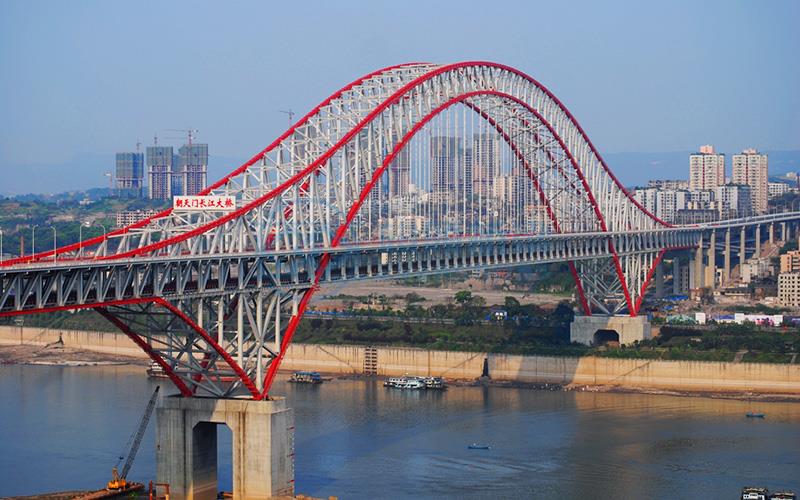
The main structural form of steel arch bridge
The upper structure of steel arch bridge is mainly composed of arch ring, suspension rod (or arch column), tie rod, bridge beam and other components.
1. According to the structure of the form of classification:
(1) According to the section form of the main arch ring, it is divided into: steel box arch, steel pipe arch, steel truss arch.
(2) According to the space posture of the two arch ribs: parallel arch ribs, basket arch ribs, butterfly arch ribs.
(3) According to the position of the carriageway system, it is divided into: upper bearing type, middle bearing type and lower bearing type arch bridge.
(4) According to the layout of the boom classification: parallel vertical boom, inclined boom, mesh boom.
According to the structural system classification
Steel arch bridges have both composite system arch bridges and simple system arch bridges. There are several kinds of combined system arch Bridges, such as tie arch, loser arch, lange arch and other combined system arch bridges.
(1) Simple system arch bridge: only the arch ring is the main force component, and the simple system is a thrust arch structure, and the thrust of the arch is directly borne by the pier or foundation.
(2) Combined system arch bridge: carriageway beam and arch combination, common force.
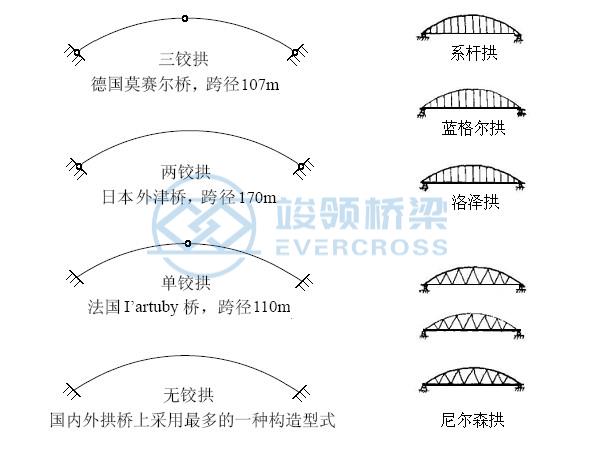
Main arch structure
Steel arch can be designed into truss arch, box arch, plate arch. Many truss arch bridges are built in foreign countries, and more than ten steel box arch Bridges are built in China. Truss arch bridge is an important form of rigid arch bridge with large span.
The main arch of truss arch bridge along the span direction: equal height, variable height.
The overall design parameters of long-span steel truss arch bridge are:
① Layout of arch rib truss;
② Arch axis;
③ Vector span ratio;
(4) The selection of the height of the vault and arch foot;
(5) Boundary conditions;
⑥ Bar section form;
⑦ Bar section area.
Trussed arch rib can be divided into Pratt truss, Warren truss, K truss, sub-truss and other forms according to the main truss frame classification.
The mechanical properties of K-type truss are the best.
Economical, W-type truss with the least amount of steel.
Structural construction and aesthetics, P-type truss has advantages.
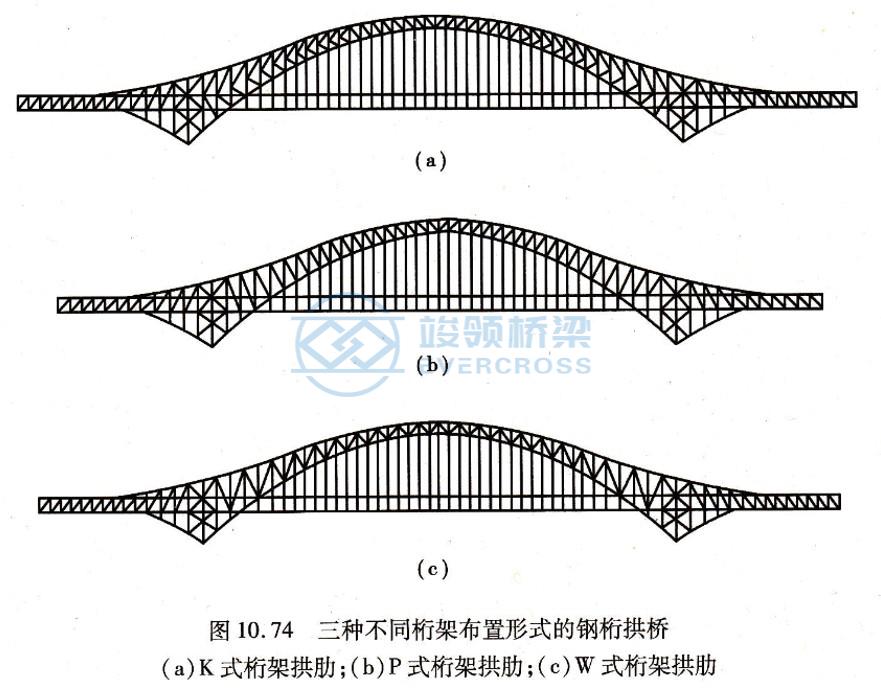
First, the structural characteristics of the main components of steel arch bridge.
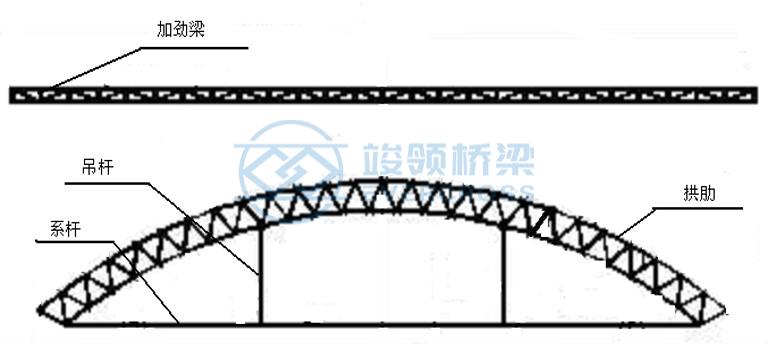
1. Arch rib
The main load-bearing members of the structure mainly bear axial pressure, but also bear part of the bending moment, and the eccentric compression members are mainly compressed.
According to the form of section is divided into: box, pipe, truss type.
Trussed arch rib has light weight, greater span capacity and good economy.
2. Boom
It is a force transfer component, which transfer the deck load to the arch rib of the bearing member, the boom is mainly an axial tension member. The rigid boom is made of multi-purpose steel pipe or section steel and can withstand pressure. The flexible boom is made of high-strength steel wire bundle or steel strand, which can only be stretched, convenient construction and beautiful appearance.
Elevation arrangement of the boom
Boom spacing is the span length of the longitudinal beam of the carriageway, and it usually takes equal spacing.
According to its layout in the arch plane, the boom is divided into: parallel vertical boom, inclined boom, mesh boom.
According to the placement quantity the boom is also divided into single boom, double boom.
3. Tie bar (beam)
For the non-thrust arch, the thrust of the arch is borne by the tie rod, and the tie rod bears the larger axial tension.
Divided into: rigid tie rod, flexible tie rod.
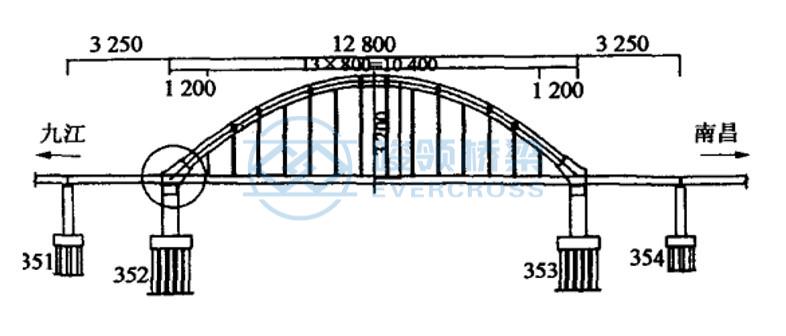
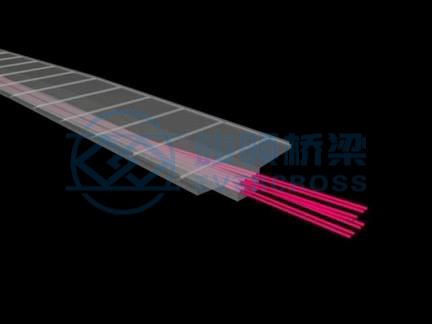
4. Cross brace
In order to ensure the transverse stiffness and stability of the two arch ribs and withstand the transverse horizontal forces acting on the arch ribs, bridge deck and boom, it is necessary to set the transverse supports.
The cross brace can greatly improve the out-of-plane stiffness and torsional stiffness of the whole bridge, but basically do not improve the in-plane stiffness.
Basic requirement
It is arranged on the arch section outside the scope of the clearance height of the bridge floor;
The width of the brace should not be less than 1/15 of the length.
The structural form of the cross brace:
The common ones are "one-word brace", "K-shaped brace", "X-shaped brace", "meter-shaped brace".
The position of the cross brace corresponds to the position of the lifting point, and is symmetrical to the odd arrangement of the arch roof.
The arch is generally set up "one-word support", and the arch ribs near 1/4L are generally set up "K-shaped support".
The long span wide bridge is usually equipped with "meter-shaped supports" on the arch roof and "K-shaped supports" on both sides.
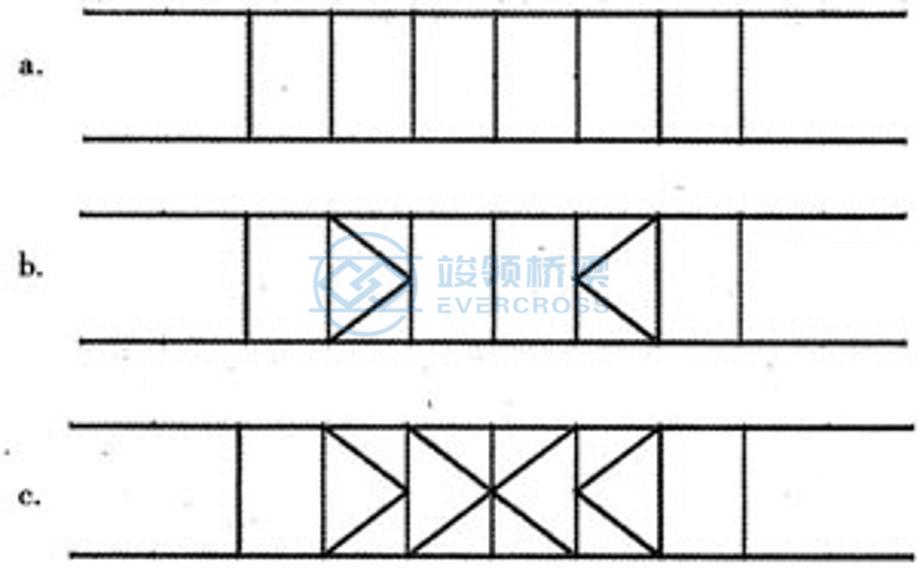
5. Arch post
The stand column is used for the upper bearing part of the upper bearing arch bridge or the middle bearing arch bridge, and is the force transfer structure between the bridge floor system and the main arch rib.
Second, the overall design parameters of arch rib
The main design parameters of long-span steel truss arch bridge are as follows: beam span ratio, selection of arch axis, choice of vault and arch height.
Rise span ratio
Mainly according to the topography of the bridge site, geological conditions, bridge clearance requirements and other factors to determine.
The common range of arch rib span ratio is 1/4~1/7, the span ratio of steel truss arch bridge is usually 1/4~1/5.
The smaller the span ratio is, the greater the horizontal thrust of arch foot is. When geological conditions are poor, a larger vector to span ratio can be used to reduce horizontal thrust.
Axis of arch
The ideal arch axis is consistent with the pressure line on the arch, and the section only bears the pressure without bending moment, which can make full use of the material strength.
Common forms of arch axis: arc line, quadratic parabola, catenary.
Arch rib vault and arch foot height selection
According to the variation of arch rib height, it can be divided into equal height arch rib and variable height arch rib.
When the span is large, the variable height arch rib is used to adapt to the internal force distribution of arch rib and save the engineering amount.
Applications of steel arch bridge:
The thrust of tie arch is digested by internal system, which is suitable for long span rigid arch bridge. The Roser arch with rigid arch and rigid beam is suitable for heavy-duty railway bridge; The Rangel arch with rigid beam and flexible arch is suitable for the double-deck arrangement of both roads and railways.
Steel arch bridge features:
The steel arch has magnificent appearance, large span capacity and high carrying capacity. The maximum span of steel arch bridge is 552m which has been built.
Evercross Steel Bridges Overview:
EVERCROSS STEEL BRIDGE SPECIFICATION | |
EVERCROSS STEEL BRIDGE | Bailey bridge (Compact-200, Compact-100, LSB, PB100, China-321, BSB) |
DESIGN SPANS | 10M TO 300M Single span |
CARRIAGE WAY | SINGLE LANE, DOUBLE LANES, MULTILANE, WALKWAY, ETC |
LOADING CAPACITY | AASHTO HL93.HS15-44, HS20-44, HS25-44, |
STEEL GRADE | EN10025 S355JR S355J0/EN10219 S460J0/EN10113 S460N/BS4360 Grade 55C |
CERTIFICATES | ISO9001, ISO14001, ISO45001, EN1090, CIDB, COC, PVOC, SONCAP, etc. |
WELDING | AWS D1.1/AWS D1.5 |
BOLTS | ISO898, AS/NZS1252, BS3692 or equivalent |
GALVANIZATION CODE | ISO1461 |







 Certified
Certified


